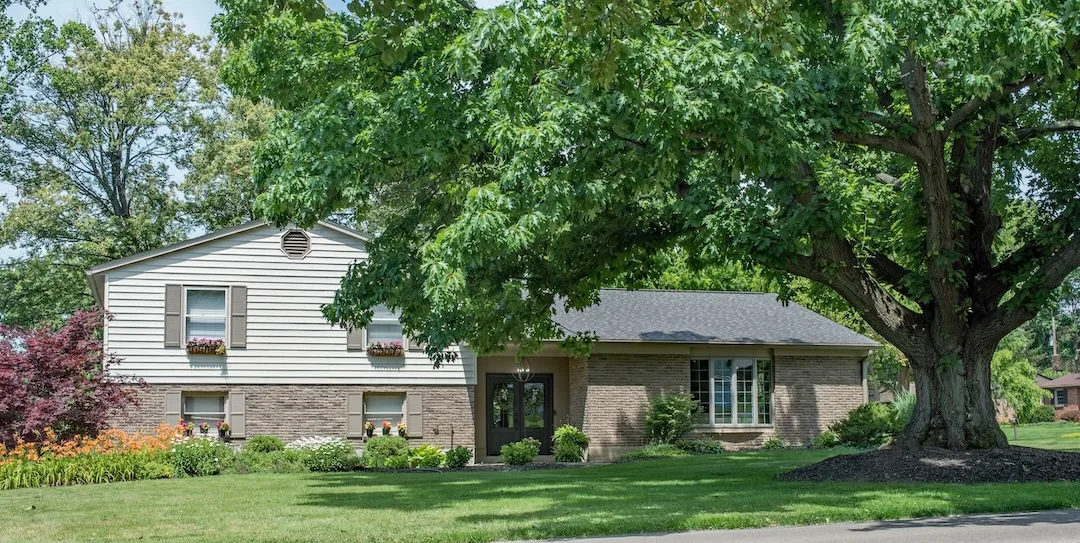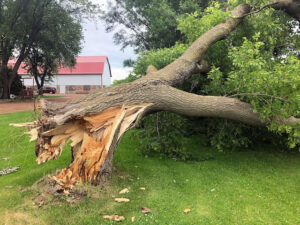Avoid Hidden Tree Costs When Buying a Home
Imagine buying your dream home, only to discover thousands of dollars in tree removal costs weeks later. Diseased trees, hazardous limbs, declining end of lifecycle trees, or unexpected landscape overhauls can ruin your budget and spoil your vision.
Don’t let hidden tree issues derail your homeownership experience! We’ve spent over a decade helping new homeowners avoid expensive tree-related surprises. This page shares crucial insights to protect your investment and help you negotiate a fair deal.
ROOTS (TREE STABILITY AND FOUNDATION IMPACT)
Tree roots are often out of sight, out of mind. Yet, their impact on the safety and beauty of your landscape can be far-reaching, sometimes overshadowing the tree’s canopy.
Things to Look For:
Recent Excavations: Recent underground utility work, additions to your home or garage, or sidewalk/pavement repairs within the tree’s drip line (beneath the canopy edge) can damage critical roots. Since, in ideal conditions, a trees major roots are all in the top 18′ of soil; these disruptions can lead to compromise, instability, and major dieback in the years to come.
Proximity to the Foundation: Some trees develop large, invasive roots that can cause or worsen foundation issues, especially with older homes. Additionally, large trees planted too close to the foundation may lack sufficient space to establish strong anchor roots, decreasing their stability over time.
Evidence of Ground Heaving/Tree Leaning: Symptoms like loose, raised soil around the roots, cracks, and significant leaning can indicate that the tree’s anchor roots may be failing, causing it to gradually fall. While relatively uncommon, this is an important issue to watch for.

TROUBLESOME TREE TYPES
Certain tree species are less suitable for urban yards and are more likely to cause problems. This is reflected in many municipalities often selecting only three large tree species for planting in busy areas.
Trees to Avoid:
Manitoba Maple/Box Elder: This common urban tree has a short lifespan, a tendency to grow multiple stems, fast-rotting wood, and becomes unstable as it ages. If you see a mature Manitoba Maple (30-40 years old) on the property, consider a professional assessment and potentially negotiate its removal before closing the deal.
Mountain Ash (Mature): While beautiful, mountain ash trees don’t age gracefully. After about 30 years, they become prone to rot, instability, and collapse due to their multi-trunk growth habit.
Swedish Aspen: These trees have a notoriously short lifespan (12-20 years in Alberta). A mature Swedish aspen is likely to require costly removal within a few years.
Willows (Mature): Better suited for windbreaks and acreages, willows make poor urban trees. Their short lifespan (for large trees), incredibly fast growth (up to 10 feet per year), unstable growth habits, and weak, fast-rotting wood often lead to issues as they quickly become large and prone to collapse. Mature willow removal can be particularly expensive due to their size and difficult stumps.
If the yard you’re considering purchasing has a mature tree of any of these species, it’s wise to factor some tree work into the price negotiations.
Tip: When gauging a mature trees age; the age of the house is generally a reliable indicator. With many large trees being planted at the time the home was built. Any trees mentioned above should be considered for removal if over 40 years old.

Desirable Tree Types
Well-cared-for, mature trees can add thousands of dollars to your property value, offer priceless aesthetic beauty, and even save you money on heating and cooling costs. Here are some highly desirable mature trees to look for on your new property:
Elm: Properly maintained, elms boast sturdy wood, a reliable growth pattern, exceptional hardiness, and a long lifespan. They can be a multi-generational asset on your property.
Linden: Lindens are highly desirable estate trees, likely to increase your property value for centuries. They have uniform growth, require minimal maintenance, are hardy, disease-resistant, and offer fragrant blooms alongside their long lifespan.
Silver Maple: While these trees can struggle to reach maturity in Alberta’s climate, those that do are quite hardy and reliable. Their unique look, long lifespan, and stable form make them a great long-term choice.
Green/Black Ash: Unrelated to the problematic mountain ash, green ash trees have graced roads and parks for a long time. Their highly rot-resistant wood, beautiful fall colors, and a relatively stable growth habit make them a valuable addition to any yard.

Trees Care History
Assessing a Tree’s Past Care
You don’t need a maintenance report to see how a tree has been treated. Here are some telltale signs of neglect or harmful past pruning practices:
Topping/Pollarding: This severe cutting leaves haphazard stubs where branches used to be. Look for clusters of fast-growing shoots sprouting from large cuts on the trunk. This irreversible damage creates an unnatural-looking, unstable tree prone to safety hazards. The new growth is weakly attached and often breaks during Edmonton storms.
Large Dead Sections: Obvious dead sections signal severe neglect and poor overall health.
Poor Shape: Sharp “V” shaped branch angles, multiple trunks on spruce trees, and cracked limbs indicate improper care. While an experienced arborist might be able to improve some aspects, certain damage can permanently compromise a tree’s long-term health and safety.

Featured On:
Consumer choice award for Northern Alberta tree services 2022 and 2023!







